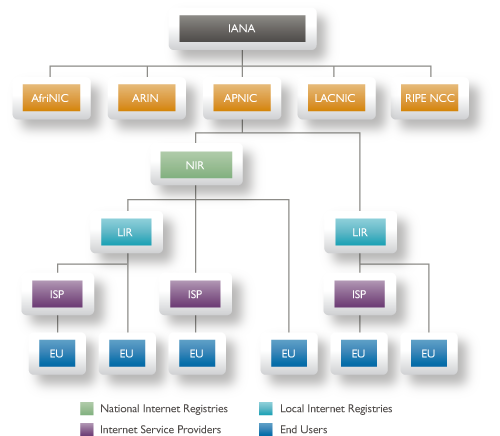based ethereum address decentralized IP address, Abolish ipv4 and ipv6
Pantyhose-X opened this issue · 3 comments
Proposed Change
THE IDEAL PATH
What if we replace the controlled and surveilled IP addresses with new internet addresses that are based on ethereum address? These addresses will inherit all ethereum address features, i.e., they will be purely decentralized, secure, future-proof, robust, anonymous, unhackable, controlled by no single authority and many more.
Is it just a dream? For now. If this could be true we would be changing the internet as we know it.
- ethereum address + ethereum DNS, access to ethereum domain
win10 network adapters : Enter the ethereum address
Wi-Fi DHCP Static : Enter the ethereum address
IPv4 and IPv6 are centralized. They are controlled by national companies, etc.
Try to Google “Who controls IP addresses?” You’ll promptly get “IANA: the Internet Assigned Numbers Authority.” IANA is the top authority behind IP address allocation and assignment. There are five different regional internet registries (RIR) with jurisdiction under the IANA.
As a matter of fact, as an individual or a normal internet user you cannot request IP addresses directly from IANA or one of the five RIRs, but only from internet service providers, such as the services offered by mobile or telecom operators.
- True decentralization, no official singular Foundation, Committee, Corporation, or entities in permanent unitary control of the protocol.
This is a worthy question. How do you envision to solve it? Can you create a Ethereum Magician thread?
Is this supposed to be a new proposal? If so, you'll need to open a pull request adding a markdown file as specified in EIP-1.
maybe start with a thread at https://ethereum-magicians.org/ ?
https://ethereum-magicians.org/t/about-the-primordial-soup-category/122 might be the best place to triage whether proceeding straight to EIP is better or worse than, e.g., writing an internet-draft and sending it to a relevant IETF mailing list, implementing an existing EIP, etc etc.
Utilizing Ethereum hash addresses to replace IPv4 and IPv6 entails a complete restructuring of how devices are identified and communicate on the internet. Here are some features and implications of such a shift:
-
Decentralized Addressing: Ethereum's hash addresses would replace the hierarchical addressing structure of IPv4 and IPv6 with a decentralized system, reducing reliance on centralized authorities for address allocation.
-
Immutable Records: Transactions on the Ethereum blockchain would serve as immutable records of address assignments and ownership, enhancing transparency and accountability in address management.
-
Elimination of Address Exhaustion: With Ethereum's virtually limitless address space, the issue of address exhaustion, which plagues IPv4 ipv6, would be eliminated, ensuring an abundant supply of unique addresses.
-
Smart Contract Automation: Smart contracts could automate address allocation, leasing, and renewal processes, streamlining network management and reducing administrative overhead.
-
Enhanced Security: Ethereum's cryptographic features would provide robust security against address spoofing, hijacking, and other cyber threats, bolstering the integrity and trustworthiness of the addressing system.
-
Global Accessibility: Ethereum's decentralized nature would ensure global accessibility to addresses, fostering inclusivity and equal opportunity for participation in the network.
-
Interoperability: Integration with other blockchain networks and protocols would enable seamless interoperability between different addressing systems and internet infrastructure components.
-
Tokenization and Monetization: Address tokens could be traded and monetized on Ethereum-based decentralized exchanges, unlocking new economic opportunities and incentivizing efficient address utilization.
While replacing IPv4 and IPv6 with Ethereum hash addresses presents exciting possibilities for addressing scalability, security, and decentralization challenges, it would also require significant infrastructure upgrades, industry-wide collaboration, and adoption efforts to realize its full potential.
